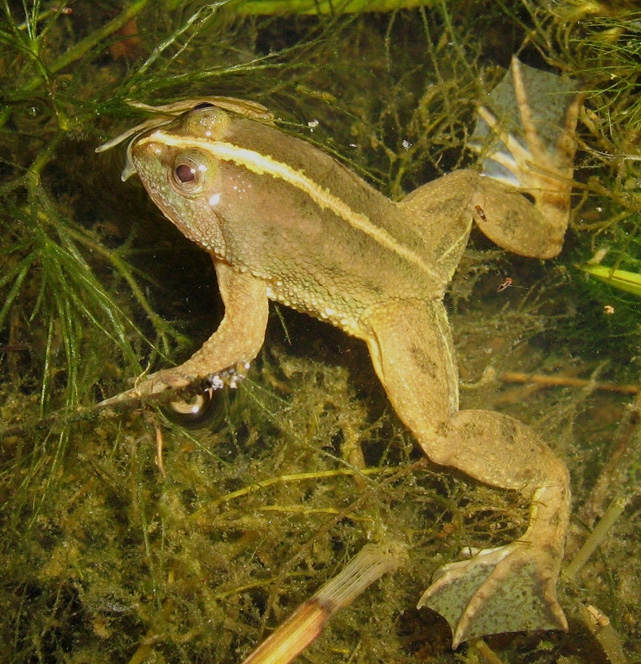| Citation |
Peter Paul van Dijk, Jarujin Nabhitabhata, Yuan Zhigang, Shi Haitao. 2004. Occidozyga martensii. The IUCN Red List of Threatened Species 2004: e.T58413A11776182. https://dx.doi.org/10.2305/IUCN.UK.2004.RLTS.T58413A11776182.en. Downloaded on 10 September 2020. |
Description |
JUSTIFICATION
Listed as Least Concern in view of its wide distribution, tolerance of a degree of habitat modification, presumed large population, and because it is unlikely to be declining fast enough to qualify for listing in a more threatened category.
RANGE DESCRIPTION
This species is widespread and is known from southern and southwestern China (Yunnan, Guangxi, Guangdong and Hainan Provinces), from throughout Thailand (Taylor, 1962) including Phuket (Frith, 1977), Lao Peoples Democratic Republic (Stuart, 1999), Cambodia (Bourret, 1941, Swan, pers comm. 2001), and Viet Nam (Bourret, 1941, Nguyen and Ho, 1996, as Phrynoglossus laevis, Inger et al., 1999). It is also known from the northern part of Peninsular Malaysia (P. van Dijk pers. comm.). Surprisingly, it is not recorded from Myanmar, though it almost certainly occurs in the eastern hills. It is known from between 10-1,000m asl.
DESCRIPTION
It is generally abundant in appropriate habitat.
HABITAT AND ECOLOGY
It primarily occurs in streamside puddles, seepages, lowland plains and other damp patches along streams and rivers, as well as rain puddles and small pools, in areas of forest on slight to moderate slopes, in areas of seasonal rainfall (Stuart, 1999, Inger et al., 1999). Tadpoles apparently live largely buried in soft puddle substrate. It is not known from level lowland plains (where O. lima occurs). In China it has also been recorded from paddy fields.
THREATS
It is probably not threatened by anything less than the complete loss of forest cover.
USE AND TRADE
In Thailand this species is used as bait for fishing.
CONSERVATION ACTIONS
The range of this species is known or expected to overlap with several protected areas. Maintaining existing protected areas will safeguard the species under present conditions. Taxonomic revision, in particular with regards to the possible synonymy of O. magnapustulosus, is needed. |

